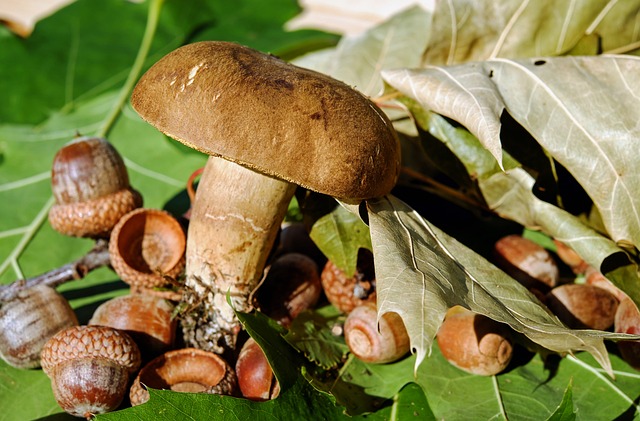Introduction
In recent years, a unique fusion of flavors has been gaining popularity worldwide: mushroom-coffee blends. This innovative combination of earthy mushrooms and rich coffee is not only a sensory delight but also a testament to the creativity and experimentation that defines the modern food and beverage landscape. As we delve into the world of mushroom-cooffee-blends, this article aims to provide an in-depth exploration of its significance, trends, economic implications, technological advancements, regulatory frameworks, challenges, case studies, and future prospects.
Understanding Mushroom-Coffee-Blends
Mushroom-coffee blends refer to a type of specialty coffee that incorporates the flavor profiles of various mushroom species. This fusion is achieved through the use of mushroom-based extracts, powders, or even whole mushrooms added directly to the brewing process. The core components of mushroom-coffee-blends include high-quality Arabica coffee beans and a variety of mushroom species, such as Lion’s Mane, Chaga, and Reishi.
Historically, mushroom-coffee-blends can be traced back to the early 2000s when entrepreneurs began experimenting with combining the earthy flavors of mushrooms with specialty coffee. Today, this trend has gained significant traction, with numerous roasters and coffee shops around the world incorporating mushroom-coffee blends into their offerings.
Global Impact and Trends
The global influence of mushroom-coffee-blends is undeniable, with key trends shaping its trajectory:
- Regional Flavors: Mushroom-coffee blends are being infused with regional flavors, such as Japanese Matcha or Italian espresso, creating unique flavor profiles.
- Sustainable Sourcing: The demand for sustainably sourced coffee and mushrooms has increased, driving the development of environmentally conscious practices in the industry.
- Health-Conscious Consumers: The growing interest in functional foods and beverages has led to an increased demand for mushroom-coffee blends perceived as having health benefits.
Regional variations in mushroom-coffee blends include:
| Region | Unique Flavors | Mushroom Species |
|---|---|---|
| North America | Cinnamon, Vanilla | Lion’s Mane, Chaga |
| Europe | Cardamom, Hazelnut | Reishi, Shiitake |
| Asia | Green Tea, Ginger | Matcha, Cordyceps |
Economic Considerations
The economic landscape surrounding mushroom-coffee-blends is characterized by:
- Market Dynamics: Growing demand for specialty coffee and functional foods has driven the market’s upward trend.
- Investment Patterns: Entrepreneurs are investing in sustainable sourcing practices, quality control measures, and innovative marketing strategies to stay ahead of the competition.
- Economic Systems: Mushroom-coffee blends have become a significant contributor to local economies, providing job opportunities and fostering community development.
Technological Advancements
Significant technological advancements related to mushroom-cooffee-blends include:
- Coffee Roasting Innovations: Improved roasting techniques and equipment have enabled more precise control over flavor profiles.
- Mushroom Extraction Methods: New extraction methods, such as cold brew or sous vide, have enhanced the quality and consistency of mushroom-based products.
- Digital Marketplaces: Online platforms have facilitated global connections between buyers and sellers, expanding market reach.
Policy and Regulation
Key policies and regulations governing mushroom-coffee-blends include:
- Food Safety Standards: Stringent food safety guidelines ensure consumer protection and maintain public trust.
- Environmental Regulations: Laws and initiatives promoting sustainable practices and reducing waste have become increasingly important.
- Trade Agreements: Bilateral trade agreements have facilitated international trade and cooperation.
Challenges and Criticisms
Mushroom-coffee-blends face several challenges, including:
- Quality Control: Maintaining consistent quality and flavor profiles across different batches and regions can be challenging.
- Cost-Effectiveness: Sourcing high-quality mushrooms and coffee beans at affordable prices remains a significant challenge for many producers.
- Regulatory Hurdles: Compliance with food safety regulations, environmental standards, and trade agreements can be complex and time-consuming.
Case Studies
Successful applications of mushroom-coffee-blends include:
- The Coffee Bean & Tea Leaf: This global coffee chain has incorporated mushroom-based drinks into their menu, demonstrating the feasibility of this trend in mainstream markets.
- Mushroom Mountain Roasters: This small-batch roaster has developed a range of mushroom-infused blends, showcasing the potential for artisanal producers to capitalize on this trend.
Future Prospects
Looking ahead, we can expect:
- Increased Innovation: Technological advancements and creative experimentation will continue to drive innovation in the industry.
- Growing Demand: As consumers become more aware of the health benefits and unique flavor profiles, demand is expected to increase.
- Sustainable Sourcing: The importance of sustainable sourcing practices will only grow, driving investment in environmentally conscious methods.
Conclusion
Mushroom-coffee-blends have emerged as a significant force in the specialty coffee industry, driven by consumer interest in unique flavors and perceived health benefits. As we move forward, it is essential to address challenges, foster innovation, and promote sustainable sourcing practices to ensure the long-term success of this trend.

Mushroom Coffee for Wellness: Harnessing Nature’s Boost with Blend Benefits
Mushroom coffee blends represent a new wave in the wellness industry, offering a fusion of tradition…….
Read More
Sip in Style: Creative Mushroom Coffee Blends to Try Today
Sip in Style: Creative gbmushroom coffee Coffee Blends to Try Today gbmushroom coffee coffee has emerged as a popular trend, blending the rich flavors of coffee with the health benefits of medicinal mushrooms. This unique combination offers a delightful experience for coffee enthusiasts looking to explore new tastes and health benefits. Let’s explore some creative […]
Read More
Find Your Flavor: The Best Mushroom Coffee Blend Options
Find Your Flavor: The Best gbmushroom coffee Coffee Blend Options gbmushroom coffee coffee has emerged as a popular alternative for those seeking a unique twist on their daily caffeine fix. Combining the rich flavors of coffee with the health benefits of mushrooms, this beverage offers a distinctive experience. This article explores some of the best […]
Read More
Discover the Magic: Exciting Mushroom Coffee Blends You’ll Love
Discover the Magic: Exciting gbmushroom coffee Coffee Blends You’ll Love gbmushroom coffee coffee has been gaining traction as a unique and health-conscious alternative to traditional coffee. This innovative beverage combines the rich flavors of coffee with the nutritional benefits of medicinal mushrooms, offering a delightful experience for both coffee enthusiasts and health seekers. Let’s explore […]
Read More
Mushroom Coffee Blends for Energy and Focus: Brewed Benefits
gbmushroom coffee Coffee Blends for Energy and Focus: Brewed Benefits In recent years, the popularity of gbmushroom coffee coffee blends has surged, captivating the interest of health enthusiasts and coffee lovers alike. This unique beverage combines the rich, robust flavor of coffee with the health benefits of medicinal mushrooms, offering a novel way to boost […]
Read More
Health and Flavor: Exploring Popular Mushroom Coffee Blends
Health and Flavor: Exploring Popular gbmushroom coffee Coffee Blends gbmushroom coffee coffee blends have gained significant attention in recent years, merging the rich flavors of coffee with the health benefits of medicinal mushrooms. This unique combination offers a new way to enjoy a morning brew while potentially enhancing well-being. This article explores the popular […]
Read More
Mushroom Coffee: A Morning Elixir for Vitality and Focus
Mushroom coffee blends are revolutionizing morning routines by combining the invigorating effects o…….
Read More
Harnessing Wellness: The Power of Mushroom Coffee Blends
Mushroom coffee blends are a contemporary addition to the wellness beverage market, infusing tradit…….
Read More
Mushroom Coffee Blends: A New Sensory Awakening for Coffee Enthusiasts
Mushroom coffee blends are a new category in the beverage market, fusing traditional coffee's …….
Read More
Energize Your Mornings: Discovering the Power of Mushroom Coffee Blends
Mushroom coffee blends are a modern twist on the classic morning beverage, combining the stimulatin…….
Read More